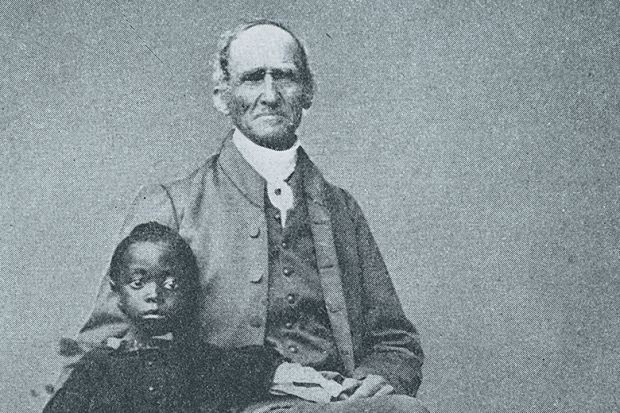That photographs (still or moving) impact American political life is a given. Iconic photographs such as Dorothea Lange’s Migrant Mother and Nick Ut’s Napalm Girl are credited with advancing support for the New Deal and opposition to the Vietnam War, respectively. Lately, cell phone videos of police killings of black people have energised the #BlackLivesMatter movement and resistance to it. If you think these are recent phenomena made possible by equally recent advances in photographic technologies, Exposing Slavery will make you think again – on all counts.
The earliest photographic technologies (daguerreotypes, tintypes, etc) quickly became surprisingly affordable. Matthew Fox-Amato traces their role in the conflict over American chattel slavery that gave rise to the Civil War and shaped its aftermath. He reads the photographs that comprise his working archive with great insight, attending to the ways they follow or break with the photographic, painterly and political conventions of their day.
Attending to patterns of display and circulation alongside relationships to written artefacts (from slave narratives to pamphlets to broadsheets), he shows how this visual archive embodies both sides of the conflict over slavery. White slaveholders displayed photographs (Fox-Amato dubs them “chattel Madonnas”) of their children with the slavewomen who cared for them as evidence of slavery’s “benevolent intimacy”. Photographs of fugitive slaves’ scarred backs documented the opposite. Enslaved people paid for photographs of family members as private mementos that accrued special value when someone was sold away. White and Negro abolitionists (including fugitive slaves Frederick Douglass and Sojourner Truth) circulated dignified portraits of themselves and of their interracial gatherings to gin up support for their cause.
Photography also propped up the racialised politics that took root in the postbellum US and the concept of race that undergirded them. If photographs of the freedmen that fought for the Union ennobled and heroised them, photographs of white Union soldiers with Negro servants whose labour made encampments a home-away-from-home set the stage for Reconstruction’s reversals. Harvard scientist Louis Agassiz commissioned photographs of naked slave men and women – staged under duress – to support his claim that white superiority was biologically based.
But the book’s significance extends beyond its documentation of a previously unknown (or at least unconnected) visual archive and its historical import. Photography’s significance to American racial politics didn’t end with Emancipation, Lee’s surrender at Appomattox, Reconstruction or the modern civil rights movement, for that matter. In this post-truth era – when, not coincidentally, violent white supremacy is ascendant – we need resources that advance visual-political literacy. Exposing Slavery is one such resource. Beyond providing important historical insights relevant to today’s racial and visual politics, it schools us in ways of looking. The arresting reproductions of old photographs call on us to slow down and pay attention. Fox-Amato’s cogent exposition of what’s on offer in the photographs – what they open up and open on to, if you will – invites us to look more deeply not only into our past but into our present. Add Exposing Slavery to your reading list and your syllabus. We’ll all be better for it.
Ellen T. Armour writes on photography, new media and visual culture from her perspective as a philosophical theologian. She teaches at Vanderbilt University’s Divinity School in Nashville, Tennessee.
Exposing Slavery: Photography, Human Bondage, and the Birth of Modern Visual Politics in America
By Matthew Fox-Amato
Oxford University Press
360pp, £25.99
ISBN 9780190663933
Published 2 May 2019
后记
Print headline: Documented in black and white




